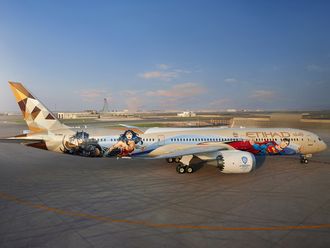Dubai: The Middle East airlines have been adding more capacity than there is demand for the past six months, the International Air Transport Association (IATA) said on Thursday, in its monthly traffic updates.
Demand for air travel among Middle East carriers rose 11.3 per cent in February but that was outstripped by a 16.9 per cent increase in the number of available seats offered by those airlines.
“Traffic growth has now lagged capacity growth for six consecutive months,” IATA said in a statement.
The Middle East, home to the world’s largest airline on international routes — Emirates, is one of the fastest growing aviation markets today. Emirates, along with hub airlines Etihad Airways and Qatar Airways, compete with other major global airlines for transcontinental passenger traffic.
Globally, demand for air travel rose 8.6 per cent in February while the total number of available seats rose by 9.6 per cent, as per IATA estimates.
“February was the first month since the middle of 2015 in which capacity growth exceeded demand, which caused the global load factor to decline. It is unclear whether this signals the start of a generalised downward trend in load factor, but it bears watching,” stated Tony Tyler, IATA’s Director General and Chief Executive Officer.












